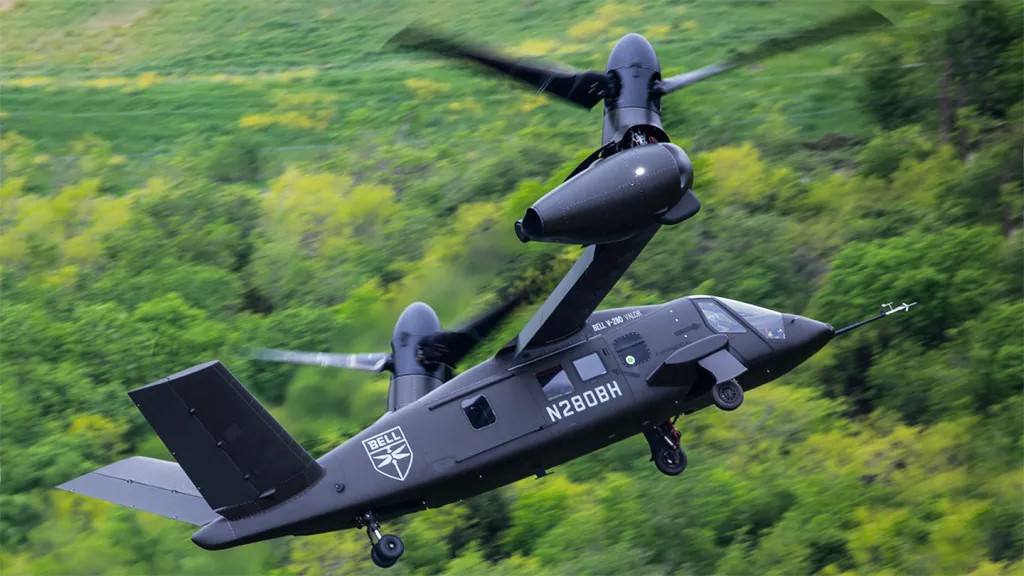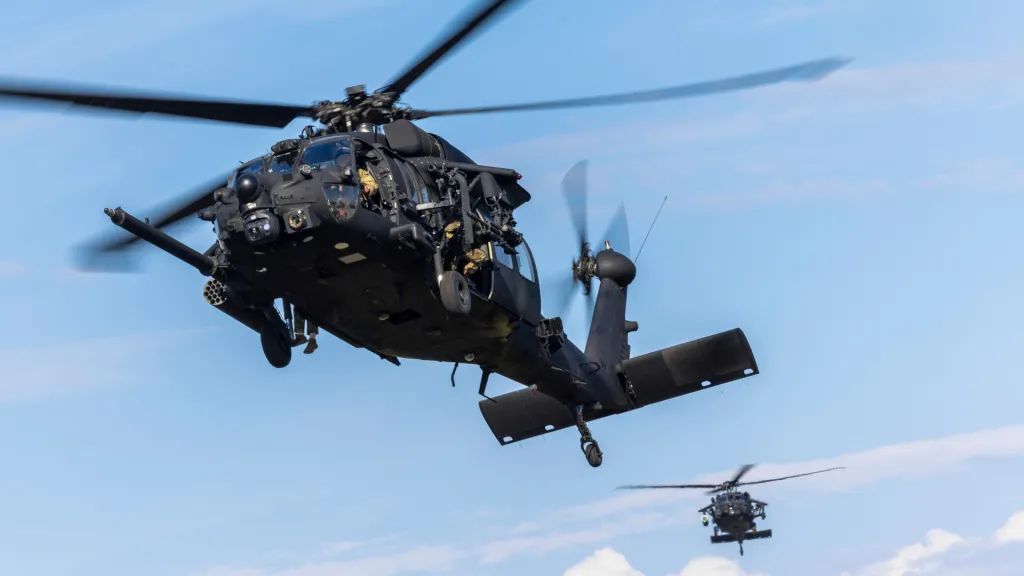The U.S. Army’s elite 160th Special Operations Aviation Regiment (SOAR), better known as the Night Stalkers, has been exploring ways to ensure it can operate in more heavily defended airspace in the future. This includes making increased use of uncrewed aircraft, the employment of new electronic warfare and decoy capabilities, and just flying longer and faster. The U.S. special operations community as a whole continues to reorient itself around preparing for high-end fights, such as one across the broad expanses of the Pacific against China, after decades of low-intensity missions in much more permissive environments.
Army Col. Stephen Smith, head of the 160th SOAR, talked about planning for future operations in denied areas deep inside an opponent’s anti-access/area denial (A2/AD) ‘bubble’ during a panel discussion today at the Association of the U.S. Army’s main annual symposium. TWZ‘s Howard Altman was in attendance and had the opportunity to speak more with Smith directly afterward. The Night Stalkers publicly acknowledged fleets include a mixture of heavily modified MH-60M Black Hawk, MH-47G Chinook, and AH/MH-6R Little Bird helicopters. The 160th also has MQ-1C Gray Eagle drones. The unit expects to eventually receive special operations-specific versions of the Army’s future MV-75A tiltrotor.

“Over the last 20 years that I’ve been in the Regiment, we have been really, really good at deploying in an environment like GWOT,” Smith said, referring to the Global War on Terror era of operations in places like Afghanistan and Iraq. “What we have done over the last 10 years is, we’ve looked at the near-peer threats across the globe, and we looked at ‘how does the 160th expect to operate inside that environment?’”
“So, what we’re going to have on the aircraft to defend the aircraft, by itself, will not survive in the A2/AD environment,” he also said bluntly during the panel, speaking generally about the known Night Stalker fleets.

Specialized training for Night Stalkers to help them survive in more contested environments has existed, but there is clearly a new paradigm.
“What we realized was really two major takeaways. The number one takeaway is we can’t do it alone. The idea of ‘alone and unafraid,’ that does not exist in the denied area planning space,” he explained. “And then, second, we needed a team to look at that. So we stood up a five-person team that consisted of our aviation flight leads.”
“When we started looking at the training concept of how the 160th is going to operate, we leveraged the three range complexes on the West Coast of the United States to create an environment that provides us a ‘tyranny of distance‘ problem, but also the complexity of using those three ranges to replicate a near-peer,” he added.

The 160th’s commander says the unit has come from all this with new views on how it might operate in more heavily defended environments going forward. This includes additional emphasis on crewed-uncrewed teaming.
“Manned-unmanned teaming is the future. We’ve talked about the potential of launched effects off the aircraft, or a potential loyal wingman,” Col. Smith said. Launched effects is a broad term that the U.S. military currently uses to refer to uncrewed aerial systems configured for different missions, like reconnaissance or acting as loitering munitions, which can be fired from other aerial platforms, as well as ones on the ground or at sea.
“We see in the near future, for our primary mission of crisis response, and also denied area penetration, we still see a human in the loop,” Smith noted. “We don’t expect to send Kit [Col. Kitefre Oboho, commander of the 75th Ranger Regiment] and his team to the X without Night Stalkers in the front of the aircraft.”
Smith highlighted how the 160th has already been teaming its crewed helicopters with its MQ-1Cs drones as something the unit is looking to build on. “So, when we train on the West Coast, we’ll use an MQ-1 to lead the half [a group of helicopters] into the objective.”

This also leads into the electronic warfare and decoy capabilities the Night Stalkers are looking at as part of future denied area operations planning.
“We can hang different capabilities on that platform [the MQ-1C]. So that platform could look like a Black Hawk. It could look like a [CH-]47. It could look like a Little Bird,” Smith said. “So we’re using that as a decoy, [and there are] potentially other capabilities on [the] side of that aircraft.”
The 160th is also exploring other new electronic warfare capabilities, including improved self-protect jamming systems, according to Smith. “We’re also looking at a layered effect of using cyber and space to create a pulse for us to be able to penetrate,” he added.
There’s also just the matter of being able to fly longer and do so faster. The 160th is already well known for conducting long-duration flights in challenging and hostile environments. The unit’s MH-60Ms and MH-47Gs are capable of being refueled in flight to extend their range. Night Stalkers typically fly their missions at extremely low altitudes and under the cover of darkness, using terrain to help mask their ingress and egress.


“Leveraging the cover of darkness, leveraging weather, flying at low altitudes, and flying where the enemy systems are not. That seems somewhat obvious, but that is really driving the basis of our Night Stalker fundamentals, [and] mission planning to create those contingencies so we can buy down a number of the risk,” Col. Smith said.
However, historically, 160th operations have often been punctuated by stops at temporary forward arming and refueling points (FARP) along the way, to and from objectives. Smith says extending the range of his fleets will be key to future operations in denied areas because of the vulnerabilities that landing in the middle of a mission creates.

“One of the things we’ve learned is, if you go to ground, you’re vulnerable,” he said. “And so we have leveraged our aerial refuel[ing capability] to get after that, and we look at some of our collapsible fuel systems inside the aircraft to do that.”


There is a question here that is increasingly facing the entire U.S. military, about how existing non-stealthy aerial refueling tankers will be able to support any fixed or rotary-wing aircraft operating deep in high-threat areas. The U.S. Air Force, which currently provides the bulk of aerial refueling support to the 160th, has separately been looking at ways to get after that problem set, as you can read more about here.
This is also where the future special operations version of the MV-75A, which is set to offer the 160th an important boost in speed and range, especially over its MH-60Ms, could also come into the picture. Those tiltrotors are also expected to have aerial refueling capability. Questions do also remain about what the final special operations configuration of the MV-75A may look like, though we know the core design is already being developed with specific features to make it more readily adaptable to that role.

“That’s a great question, and we don’t know, and that’s why we’re actually having that conversation,” Col. Smith told TWZ‘s Howard Altman after the panel when asked for more information about what the special operations configuration of the MV-75A might look like. “We have not determined what that looks like. Is it the version that we’re all in lockstep with, is that going to be the version? possibly. Is [sic] there some minor modifications? potentially.”
What is clear is that the 160th SOAR is looking hard at ways to ensure that it can bring its unique skill sets and otherwise survive, even in more contested environments, while taking part in future high-end fights.
Contact the author: [email protected]
